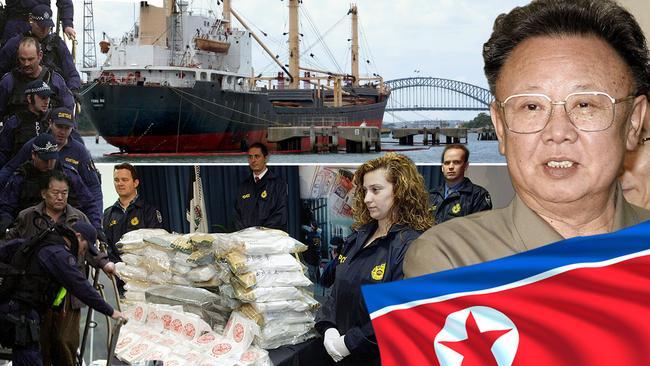An unlikely alliance of communists and crooks conspired to smuggle a mammoth shipment of heroin into Victoria, in a plot masterminded by North Korean dictator Kim Jong-il’s secretive Bureau 39. But top police work and wild weather brought the plan undone.
It is more than a decade since Australia’s foreign minister and the nation’s top cop controversially accused the North Korean Government of industrial scale drug trafficking.
They did so after the North Korean ship Pong Su sailed into Victorian waters with 150kg of heroin on board.
As the Herald Sun revealed in 2006, a secretive North Korean Government department – which was established to make billions of dollars for its then leader, the now dead dictator Kim Jong-il – masterminded the Pong Su heroin importation.
Known as Bureau 39, its role was to control and increase the flow of foreign currency into Kim Jong-il’s coffers through legal and illegal pursuits.
Various experts agreed with former Foreign Minister Alexander Downer and the then Australian Federal Police chief Mick Keelty that the rogue nation was behind the massive shipment.
Police intelligence suggests the North Korean Government teamed up with an Asian organised crime gang in an ambitious bid to flood the Australian market with high-grade heroin.
The Pong Su shipment was the first of many the unlikely alliance of communists and crooks intended smuggling into Victoria.
That plan was foiled by the AFP.
The Herald Sun also revealed in 2006 that a North Korean official ordered the crew on the Pong Su heroin ship to stop and fight to avoid capture in Australia.
While it is difficult to imagine a government being involved in international drug smuggling, there is a lot of evidence to suggest North Korea has been doing that for years.
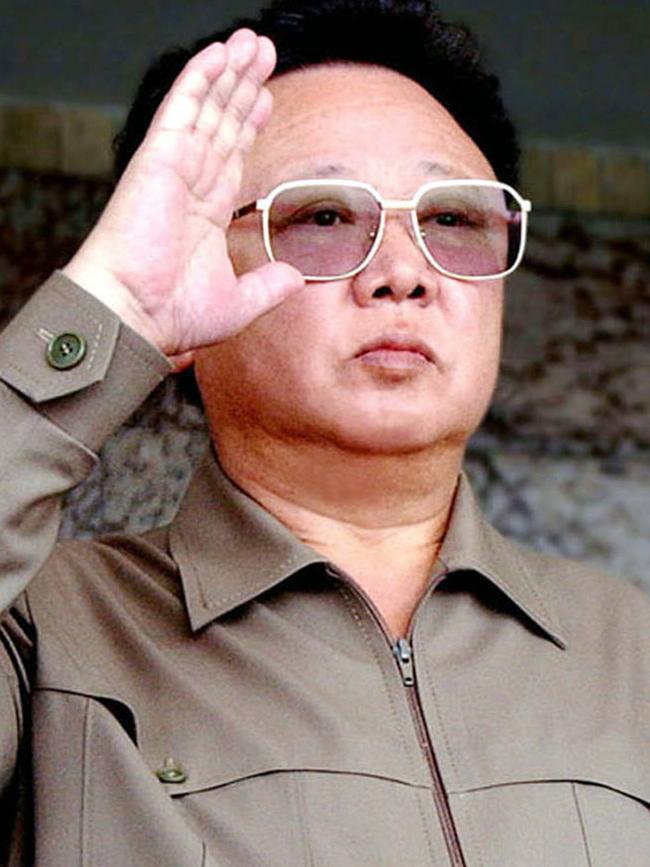
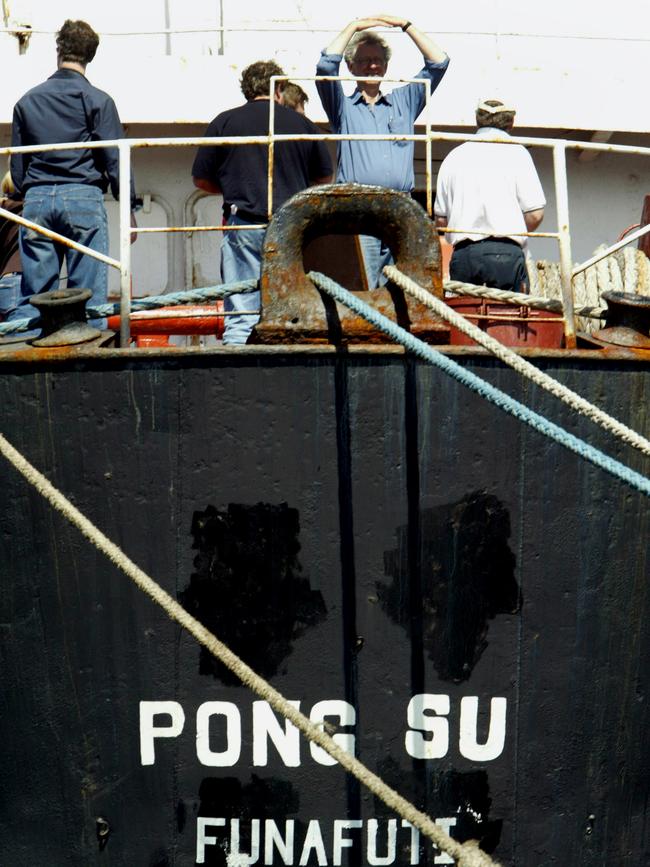
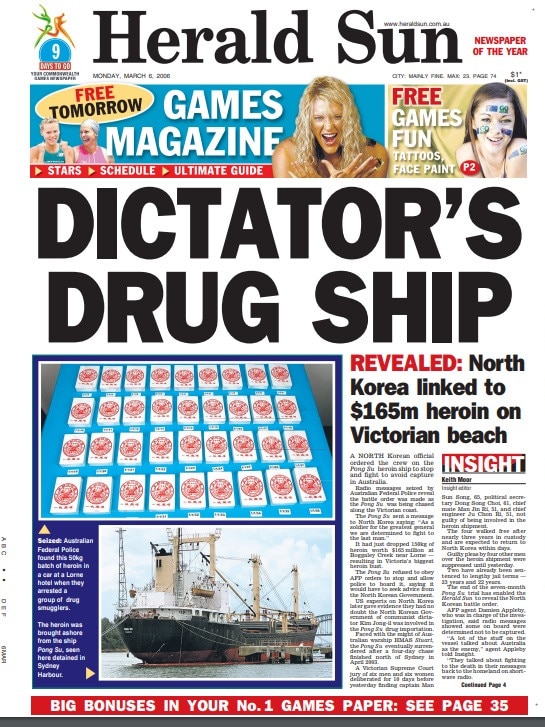
The North Korean ship Pong Su brought 150kg of heroin into Australian waters in April 2003.
And two men from the 4015-tonne freighter used a dingy from the Pong Su in an attempt to bring it ashore near Lorne.
Victorian Supreme Court jury members who acquitted Pong Su captain Man Sun Song, 65, its political secretary Dong Song Choi, 61, chief mate Man Jin Ri, 51 and chief engineer Ju Chon Ri, 51, were not told it was likely the North Korean Government was behind the heroin smuggling attempt.
Nor were they told another North Korean from the Pong Su, Ta Song Wong, 40, had already pleaded guilty and was eventually jailed for 23 years.
The jury was also not told the three shore party members, Yau Kim Lam, 35, Kiam Fah Teng, 48, and Wee Quay Tan, 35, all pleaded guilty to aiding and abetting the Pong Su heroin operation and each was jailed for more than 20 years.
Evidence from experts on North Korea, Balbina Hwang and Joe Bermudez, was also withheld from the jury.
The two eminent US experts gave written and verbal evidence during the Pong Su court hearing, but Supreme Court judge Murray Kellam ruled the jury was not allowed to hear it.
The Herald Sun gained access to that evidence.
Both experts said they had no doubt the North Korean Government was involved in the Pong Su heroin smuggling operation.
They revealed the North Korean Government created a secretive department, known as Bureau 39, to control and increase the flow of foreign exchange through legal and illegal imports.
“Its officials are involved in heroin and amphetamine trafficking that generates as much as $500 million annually,” Ms Hwang said.
Mr Bermudez said he had spent 30 years studying North Korea and had access to classified information and government and intelligence officials.
He said the North Korean Government must have been aware the Pong Su carried heroin.
“The Pong Su could not have left North Korea without the official sanction of the Korean Workers Party and the government,” Mr Bermudez said.
“It’s most probable that the Pong Su Shipping Company, employing the Pong Su, was a front company established by the Korean Workers Party at the behest of Bureau 39 to co-ordinate the delivery of narcotics to Australia.”
Mr Bermudez said Bureau 39 was under the direct control of the then North Korean leader Kim Jong-il and the Pong Su’s political secretary, Dong Song Choi, would have been reporting back to it from on board the Pong Su.
Australian-based Korean affairs expert Dr Adrian Buzo also gave evidence it was his belief the Pong Su was owned by the North Korean Government and was under its direct control.
Finger of blame pointed at Kim Jong-il
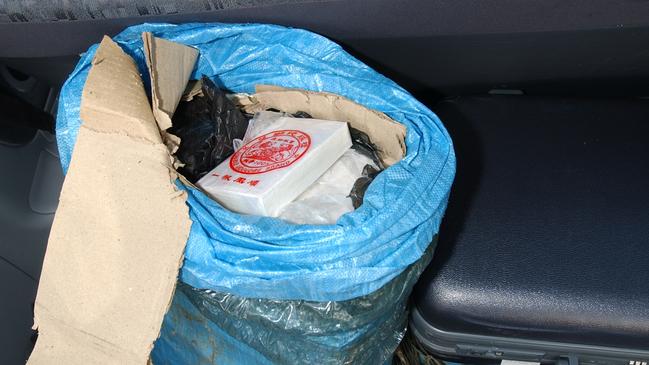
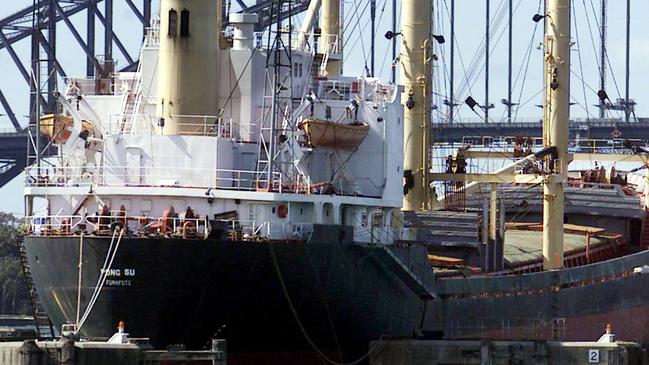
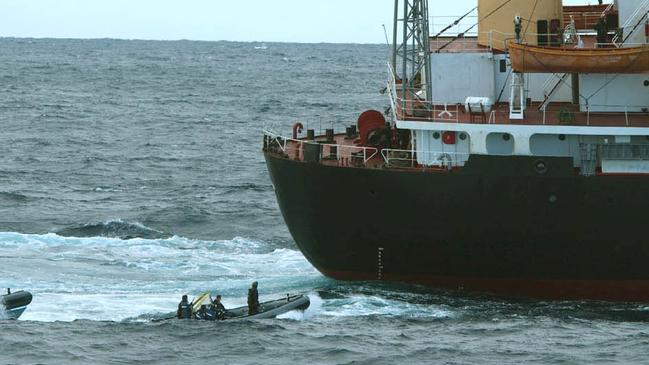
In the days after the March 2006 verdict, the then Foreign Affairs Minister Alexander Downer and AFP Commissioner Mick Keelty pointed the finger firmly at the communist government of North Korean dictator Kim Jong-il as being responsible for the Pong Su shipment.
Mr Downer said the acquittal of Pong Su crew members did not clear the North Korean Government of heroin smuggling and vowed to raise his concerns with Kim Jong-il.
“But these people being acquitted isn’t to say that that means the North Koreans weren’t involved in it,” he said. “The North Korean Government wasn’t on trial in this case.
“But the question of its involvement is still a matter of very considerable concern to me. It was a North Korean ship, it had a North Korean crew on it. It had a member of the (Communist) party on it.”
Mr Downer said there were well-documented cases of the North Korean Government being involved in smuggling illegal drugs around the world and he had previously raised his concerns about the Pong Su case with the North Korean Government.
Mr Keelty added: “Clearly an operation of that size doesn’t get under way without some sort of significant support – not only to get the heroin into North Korea, but to get a vessel from that side of the world over to Lorne in Victoria does require significant resourcing and support.”
He also questioned the jury verdict.
“It makes you wonder how a decision would be arrived at to acquit when the vessel had no legitimate cargo, had come here to the south coast of Australia, off the coast at Lorne, had actually hovered off the coast of Lorne while the shore party went ashore,” he said.
Immediately after the acquittal the Herald Sun revealed that a North Korean official ordered the crew on the Pong Su heroin ship to stop and fight to avoid capture in Australia.
Radio messages seized by the AFP showed the battle order was made as Australian authorities chased the Pong Su along the Victorian coast.
The Pong Su sent a message to North Korea saying: “As a soldier for the greatest general we are determined to fight to the last man.”
It had just dropped 150kg of heroin worth $165 million at Boggaley Creek near Lorne – resulting in what was then Victoria’s biggest heroin bust.
The Pong Su refused to obey AFP orders to stop and allow police to board it, saying it would have to seek advice from the North Korean Government.
Faced with the might of Australian warship HMAS Stuart, the Pong Su eventually surrendered after a four-day chase finished north of Sydney in April 2003.
AFP agent Damien Appleby, who was in charge of the Pong Su investigation, said radio messages showed some on board were determined not to be captured.
“A lot of the stuff on the vessel talked about Australia as the enemy,” he said in 2006.
“They talked about fighting to the death in their messages back to the homeland on short-wave radio.
“So that’s the sort of message they are sending back to people in North Korea, that they are going to fight to the death, to the last man.
“We didn’t know that prior to boarding the Pong Su, so thank heavens we used an Australian warship and Defence forces to do so.”
MORE CRIME:
DEATH STARE OF JAILHOUSE KILLER
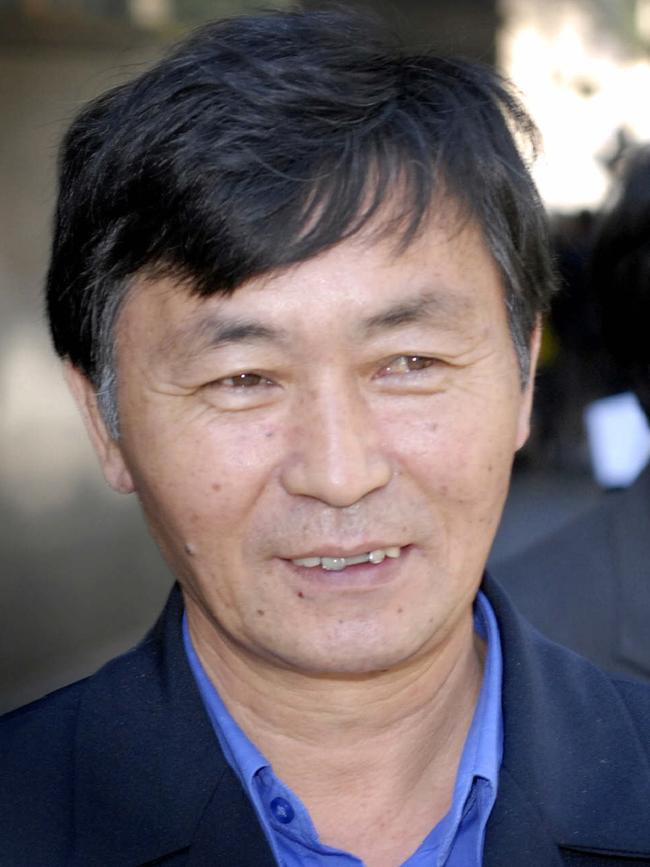
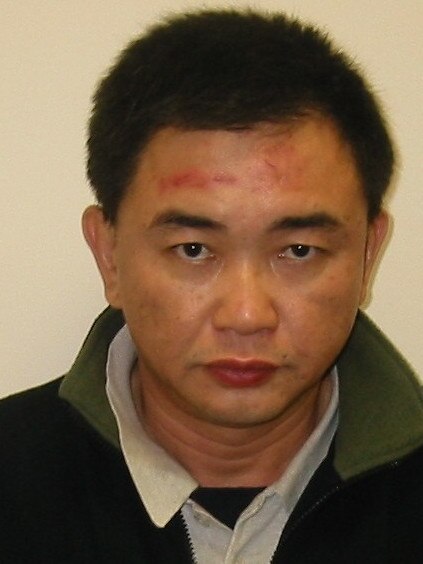
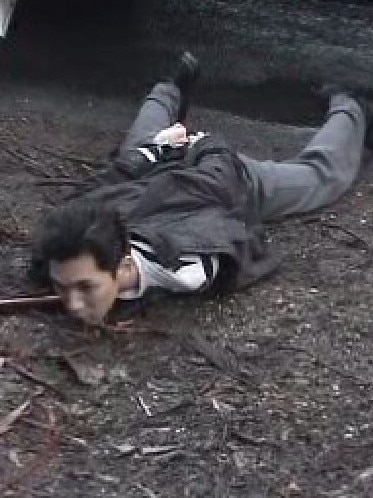
What the Pong Su’s captain and crew said
The Crown Prosecutor in the Pong Su case, John Champion, SC, told the court the vessel’s political secretary, Mr Choi, was representing the North Korean Government and that it was inconceivable he didn’t sanction the Pong Su heroin operation.
He said Mr Choi was likely to have been from a North Korean Government intelligence service and was probably the highest-ranking person on board.
“He could not have failed to know that the ship was carrying an illicit cargo and further, that the illicit cargo was a narcotic in nature,” Mr Champion said.
Mr Choi’s barrister, John O’Sullivan, chose not to call any witnesses and Mr Choi did not give evidence.
Chief mate Mr Ri’s lawyer, Nick Papas, didn’t call any evidence on behalf of his client.
Lawyers for Pong Su captain, Mr Song, and Mr Ri said their clients had no knowledge of heroin on board.
Capt Song told the court the two men who left the ship in a dinghy at Boggaley Creek were not Pong Su crew members.
He said they were representatives of a Malaysian company which chartered the ship to sail to Melbourne to pick up a cargo of luxury cars.
Capt Song told the court he stopped the Pong Su at Boggaley Creek at the request of the charterers and was told by them that the luxury car contract had been cancelled.
He said he did not see the men leave in the dinghy and did not know about the heroin.
“As far as he was concerned he was following a legitimate voyage under instructions from these charterers,” Capt Song’s lawyer, Ian Hayden, told the court.
Mr Ri told the court the Pong Su stopped close to shore at Boggaley Creek because he needed to change a cylinder head.
AFP agents on board the Tasmanian police launch Van Dieman were initially involved in pursuing the Pong Su along the Victorian coast after some of the heroin was found at Boggaley Creek.
An AFP agent made a number of radio requests for the ship to dock in Melbourne.
“When the initial direction was issued for the ship to return to Melbourne, (the agent) was told by a person on the radio that they could not return to Melbourne,” Mr Champion told the jury.
“The speaker initially indicated he would not comply with any instructions prior to seeking advice from the captain and his Government.”
Evidence was given during the trial of the four Pong Su officers that Capt Song had knowledge of all radio transmissions to and from the ship, and those sent had his authority.
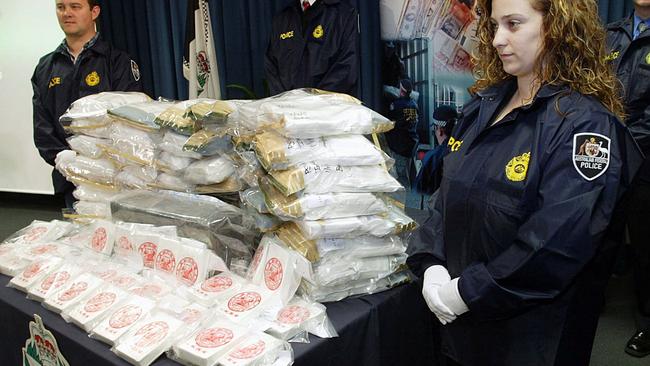
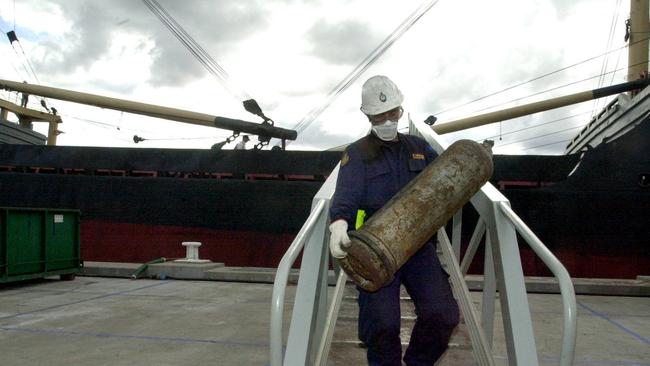
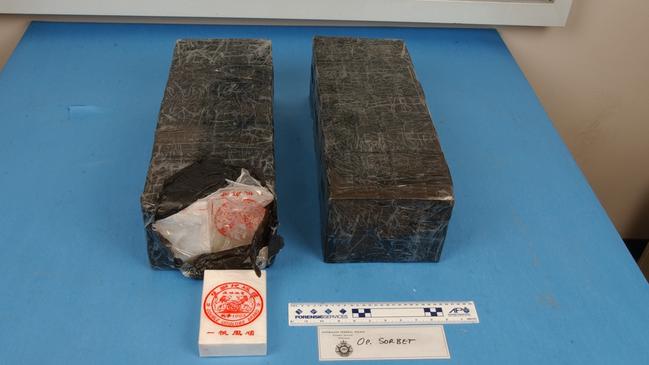
The stupid mistakes that brought plot undone
The message from North Korea ordering the Pong Su to stop and fight was received at 9am on April 18, 2003.
That was while the ship was being chased by police and two days before it was intercepted by HMAS Stuart and boarded by heavily-armed SAS troops.
A search of the Pong Su found written transcripts of radio messages sent from the Pong Su to North Korea.
“As a soldier for the greatest general we are determined to fight to the last man,” one message said.
Messages between the ship and the North Korean embassy in Canberra were also found.
The Pong Su received another message from North Korea at 5.10pm on April 18, instructing it to disguise any involvement with North Korea by telling Australian authorities it was a Tuvalu-registered ship.
It had been re-registered on the Pacific island of Tuvalu on March 25, 2003, less than a month before its load of heroin was taken ashore at Boggaley Creek, 14km west of Lorne.
Mistakes made by those on the Pong Su – and those waiting at Boggaley Creek to collect the heroin – helped the AFP piece together enough evidence to lead to guilty pleas by Wong, who helped take the heroin ashore, and the three shore party members.
For some strange reason, Wong was silly enough to tie his pants up with the same rubber he used to waterproof the packs of heroin.
That stupid mistake enabled AFP agents to positively link Wong with the Pong Su shipment.
Another stupid mistake the same night cost the life of one of his partners in crime.
Wong and the still unidentified drug smuggler used an inflatable dingy to ferry the heroin from the North Korean freighter to the secluded Boggaley Creek beach.
Either Wong or his now-dead mate forgot to undo the valve on top of the plastic fuel tank before setting off.
If this valve is not undone to allow air in as the engine sucks petrol out of the tank it creates a vacuum that implodes the tank, stopping the motor and making it impossible to restart.
All this happens within minutes, meaning Wong and his partner were left with a dead engine at night in mountainous seas.
The dingy capsized and, although Wong was able to struggle ashore, the other man hit some rocks and drowned.
One of the six 25kg packages of heroin on the dingy was lost at sea.
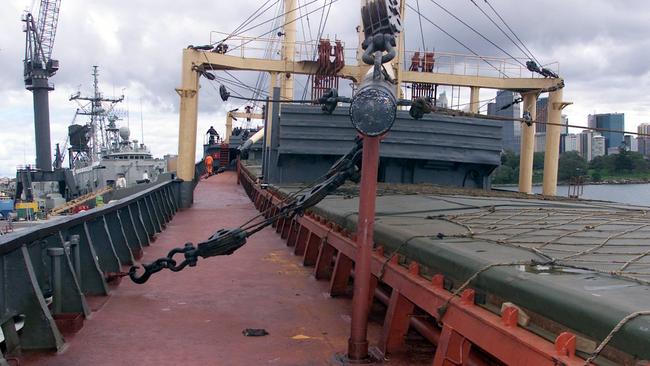
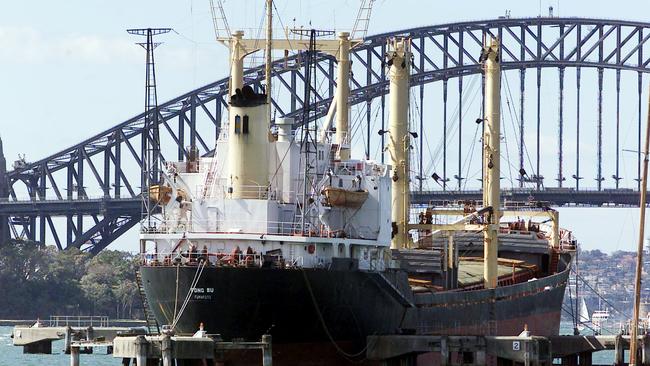
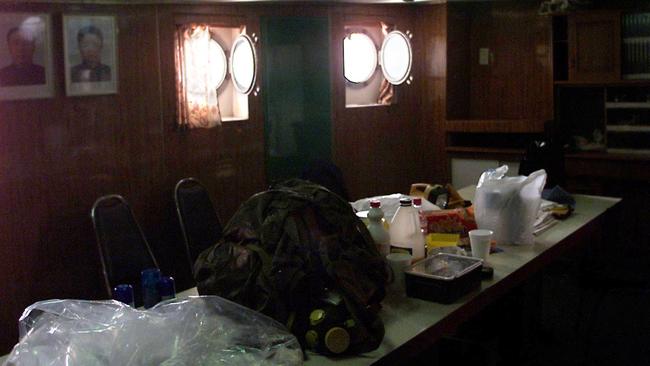
How the AFP uncovered the truth
AFP agents knew days before the Pong Su anchored off Boggaley Creek on April 15, 2003, that an Asian crime gang was planning to smuggle heroin into Victoria.
But they didn’t know how and particularly didn’t expect the gang to use a North Korean cargo ship.
The North Korean link was not uncovered until the morning after the dingy capsized, when the first of 34 Pong Su-related arrests were made.
AFP agents were tipped off that an international drug syndicate was up to something very soon after the first two members of the shore party, Yau Kim Lam and Kiam Fah Teng, arrived in Sydney on March 27, 2003, on a flight from Beijing in China.
Lam and Teng came to Melbourne almost immediately and began setting up to take delivery of the heroin from the Pong Su, which had sailed from North Korea and was between Singapore and Jakarta en route to Australia by then.
They hired a Toyota Tarago from the Europcar rental office in Mercer St, Geelong, on March 31, 2003, and asked for a map of the southwest surf coast of Victoria.
They bought a pair of powerful binoculars and a Canon digital camera from Roydhouse Cameras on the same day, and later bought a global positioning device.
The AFP was later able to download information from the GPS showing it was at Boggaley Creek between 3.11pm and 3.19pm on April 7 – eight days before the Pong Su anchored at that exact location.
Records of mobile phones seized by the AFP showed members of the shore party were in regular contact with people on board the Pong Su right up to the point it anchored next to the Boggaley Creek rendezvous point picked out by the shore party.
The prosecution argued it was likely the Boggaley Creek co-ordinates from the GPS used by the shore party were telephoned through to the Pong Su to enable the ship to anchor there.
The third member of the shore party, Wee Quay Tan, flew into Melbourne from Bangkok on April 9, 2003, using a false Singapore passport, by which time the Pong Su was off the west coast of Australia and heading towards Boggaley Creek.
Tan was born in the heroin-producing Golden Triangle on the borders of Thailand, Myanmar and Laos.
His Asian organised crime connections were good enough to get him blasted out of a Danish jail in February 2001 after being arrested in Copenhagen for heroin smuggling.
Tan fled to Germany after escaping through the exploded walls of the Danish prison and later made his way to Bangkok.
His dramatic escape was big news in Europe at the time.
By April 11, 2003, AFP agents had Lam, Teng and Tan under surveillance and on April 12 they put a listening device in the Tarago while it was parked at Crown casino.
AFP agents watched as Teng and Tan spent many hours playing roulette and baccarat at Crown in the days before the heroin bust.
Teng was also observed paying a visit to an adult bookshop in Lonsdale St.
But it was bugged conversations between Teng and Tan over the next few days that were particularly useful in enabling the AFP to piece together what was happening.
Their conversations suggested the drug deal would happen in Geelong, which is where most AFP resources were sent.
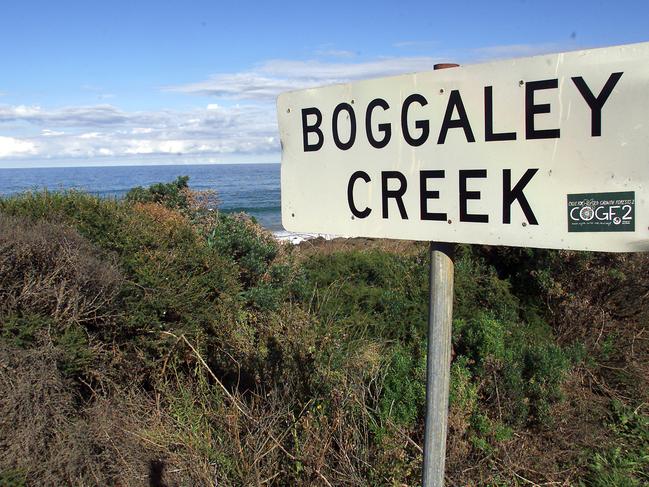
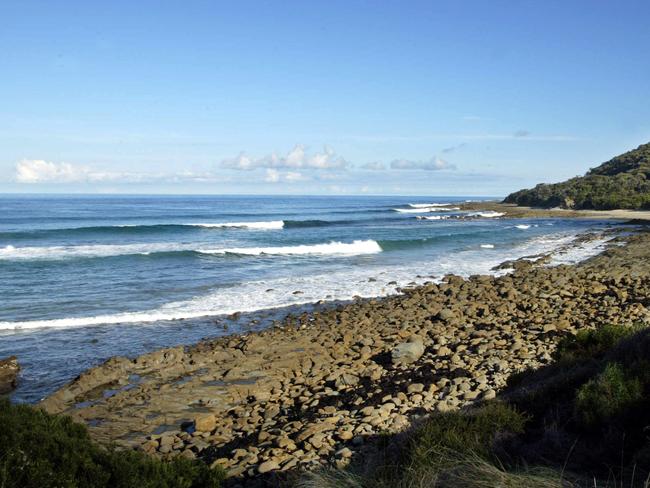
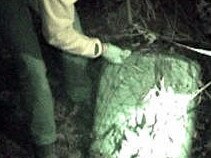
The delivery at Boggaley Creek
It wasn’t until April 15, 2003, the night of the heroin delivery, that the AFP discovered the deal was about to go down at Boggaley Creek.
AFP agent Appleby said a surveillance crew in Lorne watched as the Tarago headed west along the Great Ocean Rd about 9pm.
“As the surveillance crew followed the Tarago they saw a large ship very close to shore,” he told the Herald Sun in 2006.
“Teng and Tan had earlier been bugged talking about a speedboat coming to shore and 150kg, so we suspected a shore delivery.
“As soon as the surveillance crew saw the ship they rang me in Geelong, 60km away.
“I got as many resources as possible out of Geelong and heading towards Lorne.”
Because conditions prevented effective surveillance of either the Tarago or the Pong Su near Boggaley Creek, the AFP set up east and west of it and at the Grand Pacific Hotel in Lorne, where they knew Teng and Tan were staying.
“We blocked off each end of the Great Ocean Rd, 30km apart, with most of the surveillance in and around the hotel in Lorne,” Mr Appleby said.
Teng and Tan went back to Boggaley Creek about 1am on April 16 and were joined by Lam in his hired Ford Focus.
The difficulty in mounting surveillance at Boggaley Creek meant the AFP was unable to see the arrival of the heroin.
Nor were Teng, Tan and Lam observed taking delivery of it.
But evidence gathered later, including bugged conversations in the Tarago, enabled the AFP to piece together what happened.
The conversations revealed a state of panic after the shore party found one of the two men on the dingy had drowned and 25kg of heroin had been lost when it capsized.
Teng and Tan loaded 50kg of heroin into the Tarago and Lam picked up 75kg in the Ford Focus.
Wong was left to fend for himself, with the intention that he somehow get back on board the Pong Su. He had a GPS, signalling torch and mobile phone to help him.
Lam buried his 75kg of heroin at the first available stopping point west of Boggaley Creek. Teng and Tan headed back to the Grand Pacific Hotel in Lorne.
The AFP arrested Teng and Tan early on the morning of April 16 and recovered the heroin from the Tarago.
Lam was picked up later that day as he was driving to Melbourne Airport to catch a flight he had booked earlier.
The AFP found his hidden heroin three weeks later.
An AFP forensic scientist who examined Lam’s Ford Focus was able to match indentations in its carpet with knots on the netting on the outside of the packages of heroin hidden in the bush near Boggaley Creek.
A shivering, tired and hungry Wong was found hiding in the bush above Boggaley Creek beach on the afternoon of the next day.
He had set up a lookout where he could watch police.
Victoria Police search and rescue officer Sen-Constable Rebecca Caskey was aiding the AFP and found what turned out to be an observation post used by Wong while hiding above Boggaley Creek beach.
Sen-Constable Caskey found a water bottle, glove and bit of paper in trampled bush at 3.30pm on April 17, 2003 – the day after the first arrests.
“It seemed strange at the time but every time I moved, there seemed to be
something else moving,” she said.
“I at first thought it was a wombat or a kangaroo, or some sort of animal that I disturbed in its area.
“But it just seemed to be coincidental every time I moved it moved, and when I stopped moving it stopped moving.”
Sen-Constable Caskey reported her concern to former police special operations group officer Sgt Tim James.
“I returned to the OP (observation post) and commenced a detailed track of human presence,” Sgt James said.
“This, combined with a smell of human body odour, led me to find a person
hiding in dense scrub behind the OP.”
Not being armed while crawling through the bush, Sgt James retreated before coming back with reinforcements and arresting Wong.
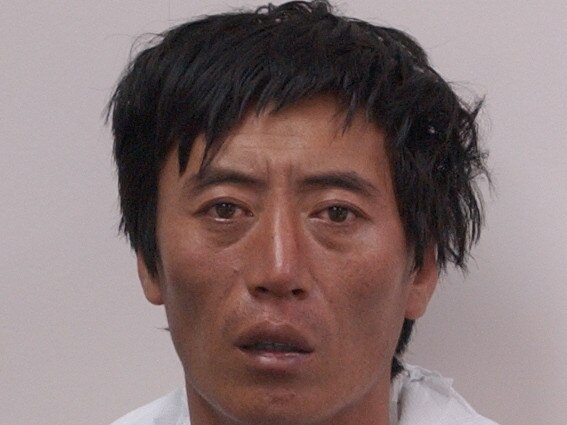
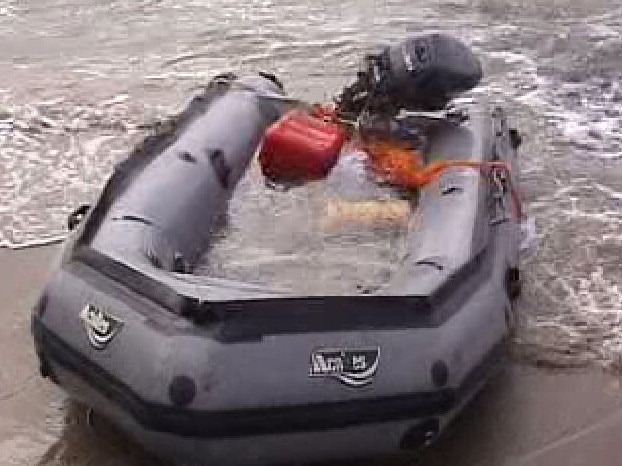
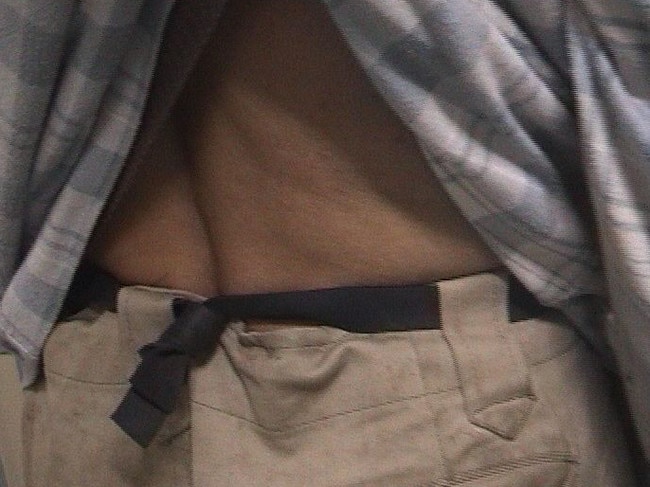
The makeshift belt that tied it together
A search of Wong’s pockets revealed a number of pieces of tyre inner tube similar to that found on Boggaley Creek beach near the capsized dingy.
“Another piece of inner tube was also being used to hold up this person’s pants.” Sgt James said.
There wasn’t much doubt Wong was involved in the heroin importation, but his choice of belt helped prove it.
AFP forensic chemist David Royds found the cut edge of Wong’s belt aligned perfectly under the microscope with the cut end of one of the pieces of rubber used to waterproof the heroin.
And Wong’s fingerprints, as well as the fingerprints of the dead man, were found on the inner cardboard of one of the heroin packages seized from the back of the Tarago.
Wong also had a mobile phone with him when the AFP found him.
Lam’s mobile number was stored in its directory.
The phone seized from Wong had also received calls from the shore party as the Pong Su was making its way along the Australian coast.
AFP agents presume the calls were to discuss the drop-off point for the heroin.
Wong also had the GPS device used earlier by Lam.
The GPS proved hugely useful to the AFP as technicians were able to download information from it that told them exactly where it had been.
That led them to a spot on the Lorne-Deans Marsh road where Lam had dumped material that tied him to the Pong Su importation.
Sen-Constable Caskey was among those using the GPS in the search.
She and Sen-Constable Greg Barras were walking through the bush carrying it.
“He was walking just literally counting down – 10, nine, eight,” Sen-Constable Caskey said.
They counted down to zero, looked down and found a plastic bag containing an Optus mobile phone starter kit, passport-type photographs of Lam and a piece of paper that referred to the Pong Su Shipping Company.
That proved the GPS was accurate to the metre.
Knowing from the bugged talk in the Tarago that they were missing 75kg of heroin worth more than $80 million, AFP agents began searching the area at first light.
Finding something hidden under seaweed and ferns on the beach, AFP Agent Stephen Meagher got Agent Doug Boudry to take video footage of him uncovering what he presumed would be the lost heroin.
Agent Boudry was recorded shouting “Holy shit” when Agent Meagher pulled back seaweed and saw a body rather than the expected heroin.
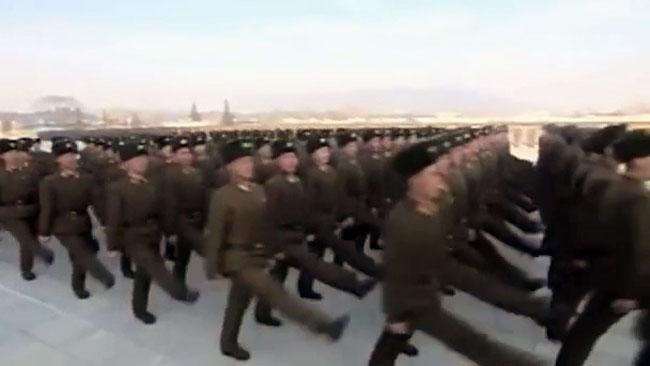
All 30 crew members on the Pong Su were initially charged over the heroin importation.
A magistrate later discharged 27 of them, saying there was insufficient evidence to commit them for trial.
That left Pong Su captain Man Sun Song, chief mate Man Jin Ri and chief engineer Ju Chon Ri facing charges with the three shore party members, Teng, Tan and Lam, and dingy survivor Wong.
Pong Su political secretary Dong Song Choi was later arrested at South Australia’s Baxter detention centre and extradited back to Victoria to join those facing trial.
Wong, Teng, Tan and Lam pleaded guilty while the others four were cleared in 2006 by a Supreme Court jury after pleading not guilty.
Justice Kellam sentenced Lam to 23 years, with a non-parole period of 16 years and jailed Teng for 22 years, with a non-parole period of 15 years.
Justice Kellam then jailed Wong for 23 years and ordered him to serve a minimum of 16 before being eligible for parole.
Tan became the last of the Pong Su people to be sentenced. He was jailed for 24 years in May 2006 and ordered to serve a minimum of 16.
The other 26 Pong Su crew were deported from Sydney to North Korea on June
24, 2004.
Despite extensive inquiries, the AFP was not able to identify the dead heroin smuggler or Wong or Lam, both of whom had fake passports and were charged under their false names.
The North Korean Government has refused AFP requests for help in identifying them.
Possible North Korean Government involvement in the Pong Su heroin importation demanded urgent discussions at the highest level.
Relations between Australia and the secretive communist regime, run then by North Korean dictator Kim Jong-il, were already strained.
The rogue Stalinist state had earlier been named by US President George Bush as a member of the Axis of Evil, along with Iran and Iraq.
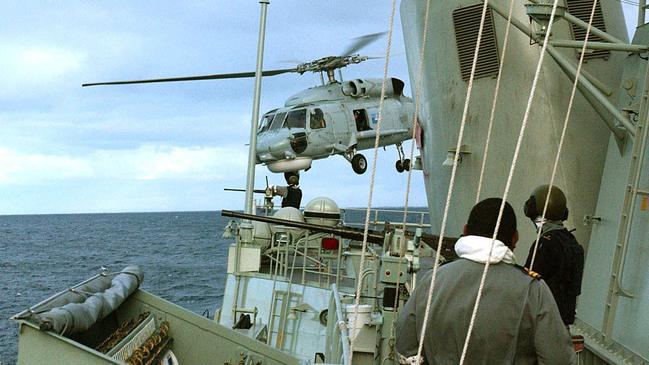
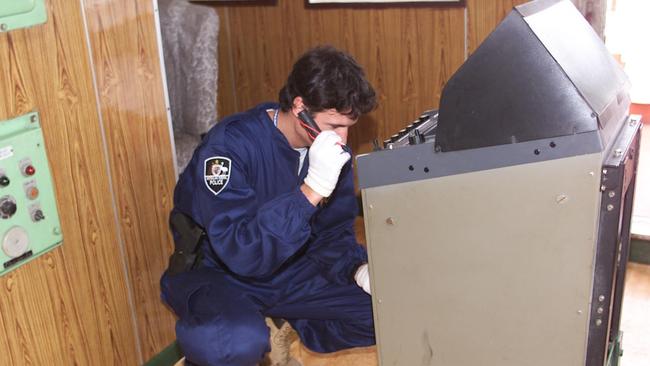
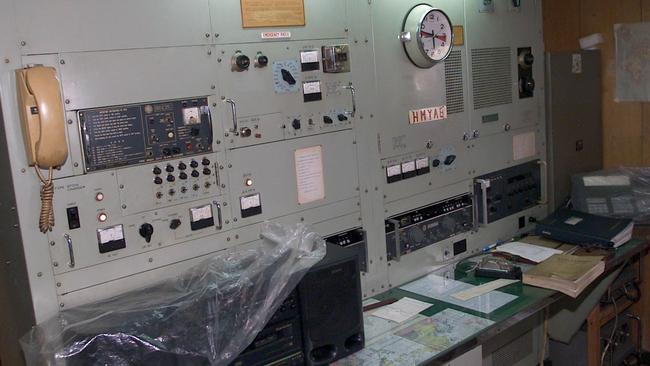
The capture of the Pong Su
Repeated refusals by those on board the fleeing Pong Su to pull into port meant police had an international diplomatic incident on their hands.
AFP agent Appleby said none of the vessels available to police were able to stop the 4015-tonne freighter.
“With a vessel that big, unless they allow a police boat to come alongside and allow boarding there is nothing we can do – and the Pong Su ignored all our requests to do that,” he said.
“We made a lot of phone calls about how we might board the Pong Su if it continued not to co-operate.
“Basically, we discovered there was no civilian authority which could assist us.”
Three police launches from Tasmania and New South Wales had already failed to stop the Pong Su as it fled up the Victorian and NSW coasts.
Radio messages from the Pong Su to the AFP indicated that the vessel was not stopping and was on its way to the Solomon Islands.
Heroin from the Pong Su had already been seized in Victoria and the AFP desperately wanted to stop what was a floating crime scene.
At that stage the AFP didn’t know about the Pong Su crew having been ordered to fight to avoid capture.
But it did know it would take more than its own resources to safely stop and secure the North Korean freighter.
So the AFP contacted the Federal Government and asked the Australian Defence Force to step in.
The Federal Government quickly agreed and arranged for Royal Australian Navy warship HMAS Stuart to intercept the Pong Su.
It made radio contact with the vessel at 5.53am on April 20, 2003 identifying itself as an Australian navy vessel and ordering the Pong Su to change course and adopt a speed of six knots to make boarding easier.
“This is Australian warship: I intend to board you,” the radio message from the Stuart to the Pong Su said.
The Pong Su didn’t take the threat too seriously at first, replying: “Waiting one hour please, over.”
The Stuart replied: “I still intend to board you.”
To which the Pong Su replied: “At present now my crew members now sleeping now so waiting some moment, over.”
The Stuart said: “No, sir, please wake them up. Rig pilot ladder starboard side, over.”
It then asked the Pong Su to get all its crew up on deck near the funnel so they could be seen from on board the Stuart.
“The captain is washing, washing and eating now so waiting some moment,” the Pong Su said.
The Stuart replied: “No, sir. Get them to the funnel NOW.”
The Pong Su crew did not appear on deck, so heavily armed SAS members, 4th Battalion Royal Australian tactical assault soldiers and navy clearance divers started boarding it from HMAS Stuart at 7.34am.
They simultaneously slid down ropes from a naval Seahawk helicopter and boarded the Pong Su from inflatable rafts.
“At 7.41am it was reported that the bridge of the MV Pong Su had been secured,” HMAS Stuart Cdr David Greaves said at the time.
“Subsequent actions by the boarding party were to secure the remainder of the crew and vessel to permit the safe embarkation of AFP and Customs officers. AFP and Customs boarded by boat at 8.34am.”
Not a shot was fired as the 30 Pong Su members surrendered – so much for their vow to battle to the death to avoid capture in Australia.
An official in North Korea – police were not able to establish who – had ordered them to stop and fight two days into the Australian authorities’ four-day pursuit of ship.
Pong Su captain Man Sun Song admitted during his trial to having ignored requests by Australian authorities to stop and allow boarding.
“I got an instruction from the company not to follow the police vessel’s instructions, and just go to Solomon Islands,” Capt Song said.
Suspected North Korean Government involvement meant various Australian agencies and departments were involved in the Pong Su investigation for months.
It involved high-level consultation between the AFP and certain agencies, including the Department of Foreign Affairs and Trade, the Department of Immigration, the Australian Defence Force, Department of Prime Minister and Cabinet, intelligence agencies and state police forces.
North Korean ambassador Chon Jae-hong was summoned by DFAT officials in Canberra on May 2, 2003 to discuss his government’s alleged link to the drug shipment.
That came a day after US Customs Commissioner Robert Bonner claimed the North Korean Government was behind the plot to smuggle heroin to Australia on the Pong Su.
Faced with a strongly uncooperative North Korean Government, the AFP, not surprisingly, was unable to get any admissible evidence of North Korean Government involvement in the Pong Su heroin importation.
But the AFP did identify the Asian international crime gang responsible for planning the Pong Su shipment. The syndicate has connections in several countries, including China, Taiwan, Cambodia and Vietnam.
The AFP believes the Pong Su delivery was a test by the gang to see whether smuggling using an ocean-going freighter would work.
Had it succeeded, AFP intelligence suggests the syndicate planned to stage many more and much larger heroin importations to Australia’s southern coast.
The Pong Su steamed along the west coast before heading east and anchoring at Boggaley Creek. AFP intelligence suggests the Pong Su took this unconventional route to avoid surveillance deployed to detect people smugglers.
AFP agent Appleby said the Asian drug syndicate involved in planning the Pong Su importation had the capacity to deal in tonnes of heroin.
He said he had no doubt the freighter’s trip to Australia with 150kg of heroin was a trial run to test the route and shore-landing method.
“If it had worked then the syndicate would have sent much larger shipments of heroin in future,” agent Appleby said.
He said the syndicate had an established drug distribution network in Australia capable of getting shipments on to the street quickly.
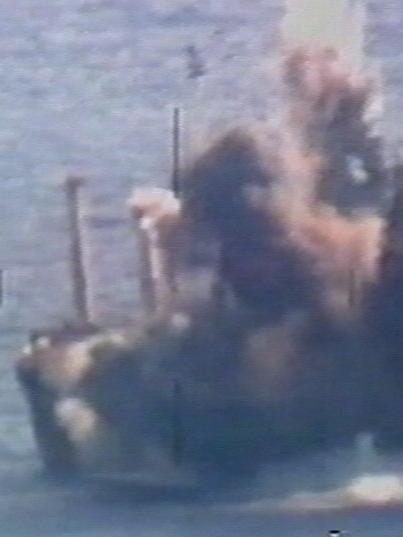
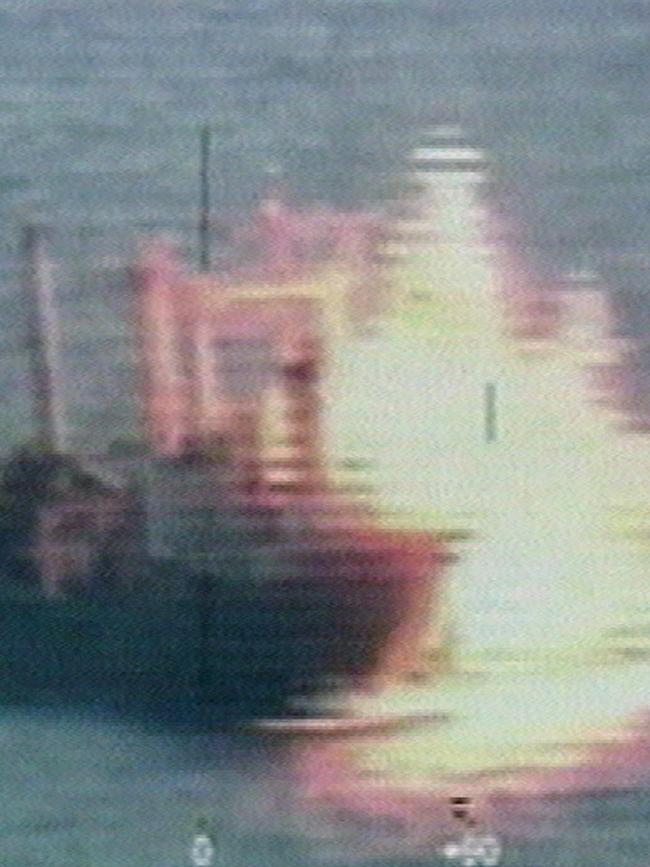
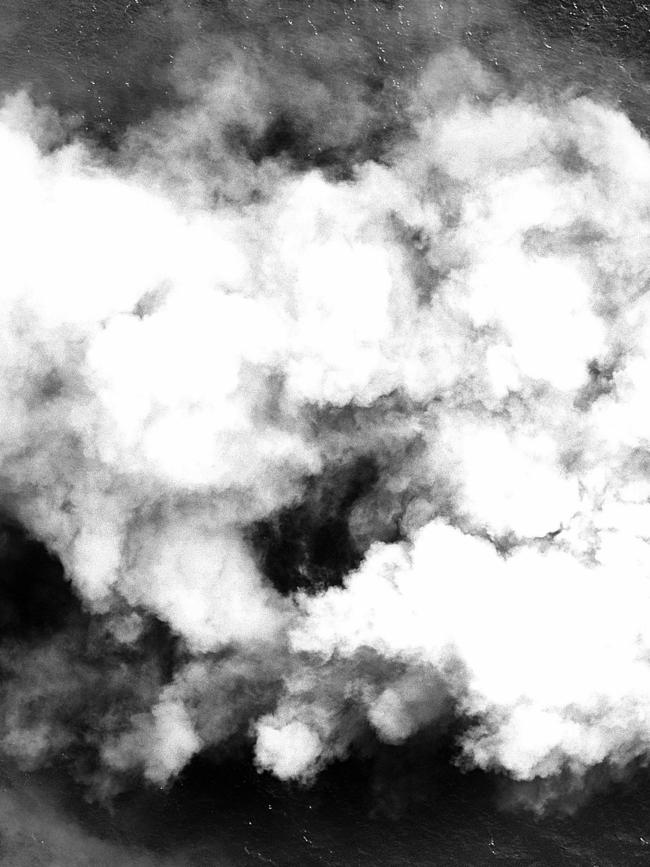
What happened to the Pong Su?
It ended up costing the Australian taxpayer about $4.8 million to maintain the Pong Su until after the trial and then destroy it afterwards.
Justice Kellam advised the AFP not to destroy the ship until after the Pong Su trial finished.
That left the AFP with little option but to bear the cost of looking after it until then.
AFP agent Damien Appleby said destroying the ship before the verdicts could have jeopardised the rights of those accused to a fair trial as the destruction of it would have attracted media attention.
He said the AFP maintaining the Pong Su was also the safest and most environmentally-responsible option.
The Pong Su was berthed at Garden Island and Snails Bay in Sydney Harbour at a cost of more than $2500 a day for nearly three years.
Federal agent Appleby said the AFP had received expert advice on what to do with the vessel and had been told it should be destroyed.
“It would cost more than it is worth to make it seaworthy again,” he told the Herald Sun in 2006.
“We think it was pushed too hard in the chase up the coast as there are cracks that have resulted in fuel leaking into the hold.
“Some of the ballast tanks have been converted illegally to carry vast amounts of oil.
“The experts have warned that if we towed it to a scrapping port it would break.
“If it broke in Sydney Harbour and spewed out all that oil it would be an environmental disaster.
“We are obliged to wear the cost of maintaining it and disposing of it safely.
“We have explored other options, such as selling it, but it really isn’t worth anything and we couldn’t be sure a new owner would take the same steps we are to ensure it doesn’t cause an environmental disaster.
“Everyone shudders at the thought of all that oil spewing out into Sydney Harbour. It would cost countless millions to clean up
“So while the Pong Su will have cost the AFP millions of dollars the cost of not ensuring it was safely maintained and disposed of would have been even greater, both in dollars and possible environmental damage.”
Jet fighters ended up being used to destroy the Pong Su in spectacular fashion in March 2006.
The scuttling exercise involving four Royal Australian Air Force F-111 strike jets and two 2000-pound high explosive laser-guided bombs dropped on the drug ship.
The F-111 strike force used the Pong Su as target practice 140km off the NSW coast of Jervis Bay. Both bombs hit their target and the ship sank in 4500m deep water just under 10 minutes later – ending a remarkable chapter in Australia’s continuing war on drugs.

